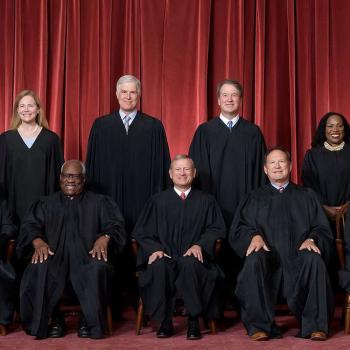The Republicans of 2013 look a lot like the Democrats of 1989 — shut out of the presidency, beholden to a shrinking base and on the wrong side of major demographic shifts in the country.
That’s the argument two longtime Democratic strategists — Bill Galston and Elaine Kamarck — make in an essay titled “The New Politics of Evasion” in the fall edition of Democracy: A Journal of Ideas. For any Republican hoping to win back the White House in 2016, it’s an absolute must-read.
What Galston and Kamarck set out to do is revisit a famed essay they wrote in 1989 about their own side’s political and policy failing, titled “The Politics of Evasion: Democrats and the Presidency.”
In that first essay, Galston and Kamarck write, “we debunked the views of our Democratic colleagues who hoped, as do so many Republicans today, that their fortunes would start looking up when a popular two-term President passed from the scene, and we laid out the kinds of changes the party would have to embrace if it wished to regain its competitiveness in presidential elections.”
The diagnoses and proposed prescriptions the duo outlined for Democrats almost a quarter-century ago also apply to Republicans today.
First, what’s wrong. Galston and Kamarck broke the Democrats’ problems into three basic “myths”: the myth of “liberal fundamentalism,” the myth of “mobilization” and the myth of “the congressional bastion.”
The first myth centered on the idea that Democrats had come up short at the presidential level in 1980, 1984 and 1988 because the candidates they had nominated — Jimmy Carter, Walter Mondale and Michael Dukakis — were insufficient adherents to liberal orthodoxy. If only the party had nominated a “true liberal,” the argument went, they would have won. Sound familiar? The critique from many within the GOP over the past two elections is that neither John McCain nor Mitt Romney were dyed-in-the-wool conservatives, and that had the party nominated someone like, say, Rick Santorum, it might have won.
The second myth — of mobilization — is all about demographics. In the 1980s, Democrats insisted that if only blacks and Hispanics would vote in numbers commensurate with their share of the population, the party’s nominee would win. They didn’t, and Democrats didn’t win. Fast-forward to today and some within the Republican Party are making that same losing argument about consolidating the white vote. “[T]he Republicans’ demographic problem is the mirror image of the one that Democrats faced a quarter-century ago,” Galston and Kamarck write. “Back then there weren’t enough minorities to make the Democrats’ electoral strategy work; today, there aren’t enough whites to make the Republican strategy viable. The same long-cycle trends that gradually helped Democrats are now hurting Republicans.” . . .
The final myth is that of the “congressional bastion,” the idea that if the party out of the White House still controls a chamber of Congress and/or a number of state and local offices then it’s evidence that all is well and major change isn’t required. This is the most prevalent argument you hear from Republicans today; yes, the party has lost two presidential elections in convincing fashion, but the fact that it retains control of the House and has a chance to retake the Senate majority in 2014 are a testament to the continued strength of the GOP’s messaging. But, holding a House majority in a deeply gerrymandered set of districts is not the same as winning a national presidential election. And the 2012 election proved that the massive gains the GOP made in the 2010 midterms are more the exception than the rule. . . .
The problem for smart Republican strategists is not figuring out what’s wrong, but developing a real and pragmatic plan to fix it. Democrats fixed their problems of the 1980s with one man: Bill Clinton.
“There’s no substitute for a leader with the guts to break with outdated party orthodoxy, as Clinton did on trade, fiscal policy, welfare and crime among other issues,” Galston and Kamarck write.
via Republican Party could learn a lot from the Democrats of 1989 – The Washington Post.
So who could that be? Who could be the Republican Bill Clinton?











